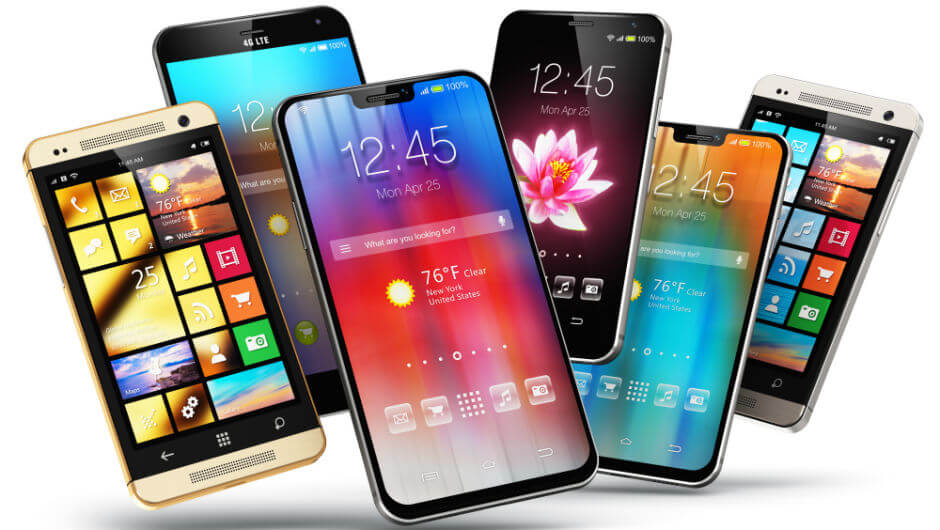Whether your priority is two-day battery life, fantastic camera performance or a spectacular screen, there’s plenty to choose from. This Guardian buyer’s guide to top-end smartphones was last updated on 25 April, and represents the best available models at the time. As new models are released and tested, this guide will be updated to help you choose the right flagship phone for you.
Best overall: Huawei P30 Pro
The best phone currently available is the brand new Huawei P30 Pro – a brilliant combination of performance, battery life, design and a game-changing camera.
Advertisement The massive 6.47in FHD+ OLED is one of the best, with a small notch in the top containing the selfie camera and slim bezels all round. The curved edges keep the width of the phone to a narrow 73.4mm, meaning it’s still relatively manageable and easier to wield day to day than most of the big-screen competition, so hopefully you’re less likely to drop it. One of the fastest optical in-screen fingerprint scanners is embedded directly under the screen in an easy-to-reach position takes care of unlocking the device.
There’s also 2D face unlock, but it’s not terribly secure. The star of the show is on the back. Huawei’s new Leica quad camera system is the most capable on any phone with incredible low-light performance that instantly turns night into day without having to wait for a couple of seconds of capture. The 20MP 0.6x ultra-wide angle camera is fun, the main 1x 40MP camera is terrific and it’s joined by a new periscopic 5x optical zoom camera that gets you closer than any other smartphone. If five times magnification wasn’t enough, there’s an excellent 10x hybrid zoom on top and then a digital zoom all the way up to 50x.
A 3D depth-sensing time-of-flight sensor rounds out the modules on the back. The rest of the phone is similar to the also excellent Mate 20 Pro: Huawei’s top-notch Kirin 980 processor, 8GB of RAM and 128GB of storage, a battery that’ll last about two days and charges super fast, plus wireless charging and power sharing. Huawei’s modified Android 9 Pie, EMUI 9.1, is highly customisable and has plenty of features but may not be to everyone’s taste. It may also not receive Android updates as fast as some others, although Huawei is improving in this regard.
Best iOS: Apple iPhone XS
The best iPhone is not the biggest or most expensive. The iPhone XS combines a stunning, good-size 5.8in screen, svelte body and top-notch performance into the most appealing package from Apple to date.
Apple’s Face ID is the best face recognition system in the business, the dual-camera system on the back is excellent, as is the performance of the A12 Bionic processor and the class-leading gesture navigation system of iOS, which has replaced the home button of iPhones of yore. You’re also in line for about five years of software updates, which is likely at least two more than any other brand of phone.
The iPhone XS is a metal and glass sandwich, and will smash just like the competition when dropped, but the stainless steel sides and glass back exude a luxury feel not matched by other phones. Sadly most will put it in a case. The biggest downsides are the price, which at £1,000 is likely significantly more than the competition, and battery life, which only manages about a day of medium usage.
The iPhone XS has wireless charging and supports fast charging via a USB-C to Lightning cable, but only ships with a slow charger in the box. Its cellular modem performance is also not as good as competitors, struggling more to keep a working 4G data connection in congested areas, particularly compared with the Mate 20 Pro
Best Android: Google Pixel 3
On the outside the Pixel 3 is quite attractive, but looks dated with a fairly large forehead and chin containing the front-facing speakers making it decidedly not “all-screen”. The back is all glass, but four fifths of it is frosted, hiding fingerprints and scratches more easily than its polished competitors. It looks best in white and feels really nice in the hand.
It’s also one of the smallest and lightest phones that’s still of flagship performance and quality, with a great-looking 5.5in FHD+ OLED screen. But what you buy the Pixel 3 for is the software experience, which is hands-down the best on any Android smartphone. You get Google features first on the Pixel 3, such as Gmail’s Smart Compose feature, and the software is just smoother and more polished than any other Android, from operation to animation.
The Pixel smartphones also receive both security and features updates before any other Android phones, guaranteed until at least October 2021. The camera is also fantastic despite being a single camera on the back, offering zoom and portrait mode matching rival dual or triple-camera systems. Google’s Night Sight is class-leading too, producing some amazing photos in very low light conditions, rivalled only by Night Mode on the Mate 20 Pro.
Advertisement Performance all round is excellent, but battery life is only just about a day of medium usage, which is about the only downside. The Pixel 3 has fast wireless charging and relatively fast cable charging.

No comments:
Post a Comment